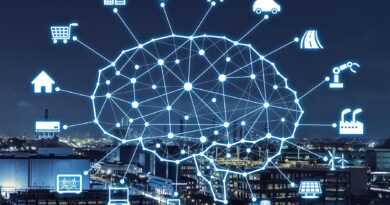What is Bitcoin Mining?
The world of cryptocurrencies is fascinating and, without a doubt, Bitcoin takes center stage. One of the key pieces supporting this financial revolution is Bitcoin mining. Let’s explore how this intriguing process behind the creation and maintenance of this digital currency works.
What is Bitcoin Mining?
In simple terms, Bitcoin mining is the process by which new units of the currency are created and transactions are verified and recorded on the blockchain. The blockchain is like a big digital ledger that stores all Bitcoin transactions.
Mining does not involve picks and shovels, but rather computational power. “Miners” are computers that solve complex mathematical problems to validate transactions and add new blocks to the blockchain. As a reward for their work, miners receive new Bitcoins.
Bitcoin price | Bitcoin price in real time
Proof of Work: The Heart of Mining
The mining process is based on a concept called “Proof of Work” ( Proof of Work ). This means that miners must demonstrate that they have done significant work by solving complex mathematical problems. This work is key to validating transactions and maintaining network security.
The complexity of these problems is automatically adjusted by the Bitcoin network to ensure that new blocks are added approximately every 10 minutes. This helps maintain a steady pace in the creation of new Bitcoins and network security.
Mining Hardware: From Ordinary to Extraordinary
In the beginning, it was possible to mine Bitcoin with a standard personal computer. However, as the currency’s popularity grew, the mathematical problems became more complex, requiring significantly greater processing power.
Currently, miners use specialized hardware, known as ASICs (Application Specific Integrated Circuits), designed exclusively for Bitcoin mining. These devices are much more efficient in terms of energy consumption and processing power, making mining more profitable.
Mining Pools: Teamwork
Given the increasing difficulty of mining and fierce competition, many miners choose to band together in “mining pools”. In these groups, miners combine their processing power to increase their chances of solving math problems and receiving rewards more consistently.
When a mining pool successfully completes a block, the reward is distributed among members in proportion to the processing power each contributed. This makes mining more accessible for those who do not have high-performance hardware.
Mining Rewards: Beyond Bitcoins
In addition to the new Bitcoins created with each block mined, miners also receive transaction fees from the transactions included in that block. Therefore, in addition to the fixed reward, variable transaction fees encourage miners to prioritize transactions with higher fees.
This duality of rewards creates an economic system intrinsic to mining, where miners are incentivized both by the creation of new coins and by transaction fees.
Environmental Challenges and Alternatives
Although Bitcoin mining is fundamental to its existence, it faces criticism due to the high energy consumption associated with ASICs . Many are exploring greener alternatives, such as Proof of Stake mining. of Stake ), which does not require the same amount of processing power.
Conclusion: The Intricate Ballet of Bitcoin Mining
Bitcoin mining is an intricate ballet of computational power, mathematical algorithms, financial rewards and environmental considerations. It is the backbone that supports the decentralization and security of the Bitcoin network.
As technology continues to evolve, it is fascinating to watch how Bitcoin mining adapts and shapes the cryptocurrency landscape. It’s a thrilling journey behind the scenes of a financial revolution that is shaping the future of money.




